Around 1877, when there were few practicing microbiologists anywhere in the world and none in the United States, Joe Kinyoun (rhyming with “pinion”; other relatives spell it “Kenyon”), a 16-year-old boy from remote western Missouri, began to study medicine with his father, who was a general practitioner. Kinyoun was not an ordinary boy and not from an ordinary family. Raised in the same North Carolina hill country that had once been home to frontiersman Daniel Boone (1734–1820), Kinyoun’s father, John Hendricks Kinyoun (1825–1903), was a man with a “peppery temper” (11) who may have been part Native American, possibly Cherokee; Joe Kinyoun’s mother, Bettie Ann Conrad (1835–1872), seems to have been part Cherokee as well (12). (Kinyoun later wryly observed: “Instead of being a Celt I am an Indian” [11]). Somehow John Hendricks Kinyoun managed to escape his wilderness environs to study at Wake Forest College (Winston-Salem, North Carolina), Columbian College (Washington, DC), and Union College (Schenectady, New York, from which he graduated with honors). After four years of teaching school and apprenticing under North Carolina Chief Justice Richmond Mumford Pearson (1805–1878), John Hendricks Kinyoun ended up with both a master’s degree and a law degree. He then went off to study under America’s preeminent surgeon, Valentine Mott (1785–1865), receiving a medical degree in 1859, with honors, from University Medical College, New York. John Hendricks Kinyoun was not the first adventurous Kinyoun; his grandfather, born outside London in 1756, had immigrated just after the Revolutionary War broke out to enlist at age 18 or 19 under General George Washington (1732–1799) (13, 14). He eventually became Assistant Quartermaster in the Continental Army.
Shortly after Joe Kinyoun’s 1860 birth in East Bend, North Carolina, the Civil War broke out. A slave owner, John Hendricks Kinyoun left his wife, his son Joe, a 3-year-old daughter, and his slaves to join the Confederate Army (Figure 1) (12). Yadkin County, North Carolina, was then a somewhat remote hill area of 10,714 residents, four flour/meal stores, one tobacconist, one tinsmith, and 22 liquor stores. It was mostly non-slaveholding, antiwar, and almost evenly split politically, albeit with a slight pro-Union tilt. Appointed Captain and Commander of Company F, 28th Regiment, John Hendricks Kinyoun fought in 13 (family archival materials indicate 17) successive battles beside two of his brothers-in-law, not as a physician but as a combatant. He avoided further direct combat—in particular the Battle of Hanover Courthouse in May 1862, where some of his former Company was captured, and the Battle of Gettysburg, where more North Carolina soldiers fell than from any other state—by resigning as Captain on 28 March 1862. After more than a year working at Richmond’s Winder Hospital, he joined the newly formed 66th Regiment as an Assistant Surgeon. Serving in the hospital at Richmond, Virginia, John Hendricks Kinyoun was present at the battles of Cold Harbor and the siege of Petersburg (12–15). At the end of the war he surrendered, with most of the 66th, to General Sherman at Durham, ironically placing him in the same place and at the same time as Union physician and future MHS Surgeon General Woodworth, who served under Sherman. Although it is not inconceivable that the two men met, no record of such a meeting is known.
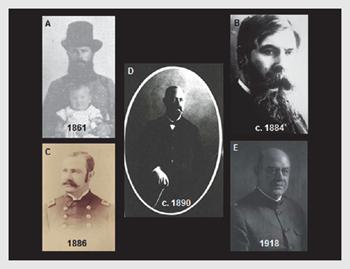
Figure 1. Joseph James Kinyoun during his lifetime. A. John Hendricks Kinyoun, LL.D., M.D. (1825–1903), holding his son Joseph James (1860–1919), apparently photographed in mid-1861 (12). The elder Kinyoun fought as an Assistant Surgeon with the Confederate Army during the Civil War, and is seen in Confederate Army uniform. B. Kinyoun as a young man, undated, probably about 1884. C. Kinyoun in MHS uniform, 1886. D. A Kinyoun self-photograph, undated, possibly around 1890. E. Kinyoun in U.S. Army uniform during World War I, early 1918
An extended verse of the Confederate anthem “Dixie” praises the war exploits of John Hendricks Kinyoun and his “boys” of the 28th (15); his “pocket” (or “field”) surgical kit is at the National Museum of Health and Medicine (16). Among the few slaveholders in Yadkin County, John Hendricks Kinyoun was a pragmatist who fought beside slaves and whose views about slavery changed as the war dragged on and the Emancipation Proclamation rocked North Carolina politics. He is said to have eventually developed a “wholehearted commitment to independence” of slaves (17), and looked optimistically toward a better postbellum nation. After the war, his medical practice included ex-slave patients. During his four years away, John Hendricks Kinyoun wrote dreamy letters to his wife, longing for the war to be over, to see “little Joe,” and to hear him talk. Growing up in the land of Daniel Boone, “little Joe” Kinyoun nevertheless became a self-proclaimed “disciple and follower of the noted David [‘Davy’] Crockett” (1786–1836) (11), a frontiersman from nearby Tennessee whose service and sacrifice Joe Kinyoun may have especially admired.
The war left their homeland destroyed, and the Kinyoun house burned down. The family moved on briefly to Texas and then to the Western frontier, settling in Post Oak Township, south of Centre View (Centerview), Missouri, in 1866, a year after the railroad’s arrival had turned it into an end-of-the-line trading outpost (14). John Hendricks Kinyoun showed up in Centre View with only $10 and an unpaid debt for relocation expenses (14). Periodically riding off on a pony to see patients who were few and far between, he made a living in his first year in Centre View by splitting 12,000 rails for about a dollar a day (14). After the Civil War, the population of Centre View increased from around 1,600 to more than 2,600. Full of black and white refugees from the Southern States, Centre View, like the rest of the territory where the James Gang and the remnants of Quantrill’s Raiders ruthlessly operated, was a lawless place of violent crime and vigilante lynching (13). At one point, Joe Kinyoun’s physician cousin James barely survived an assassination attempt; at another, a “young colored woman” from Centre View named Laura Kinyoun was brutally murdered. (The relationship of Laura Kinyoun to John Hendricks Kinyoun’s family is unknown; a possible explanation is that after the war, one or more of John Hendricks Kinyoun’s ex-slaves joined him in, or followed him to Missouri, and that Laura Kinyoun was the daughter of that ex-slave.)
Living in a primitive log cabin in a remote frontier area (Figure 2) (12, 18), the Kinyouns nevertheless seem to have been progressive, scholarly, ambitious, independent, and restless. A “common school” (public school) student, Joe Kinyoun got additional training under a “preceptor” and by age 14, he was studying algebra, geometry, and the Greek and Roman classics. He was also speaking French, German, and Spanish, skills that would prove important in his future.
Later in life, Kinyoun attributed his career path to boyhood readings about Louis Pasteur (1822–1895), although whatever of Pasteur’s work may have been available in rural Missouri at the time would not have been about human diseases.
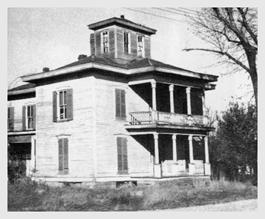
Figure 2. Kinyoun and his family moved to Centre View, Missouri, when Kinyoun was 5 years old (1866). At first they lived in a log cabin but eventually were able to afford a home (12, 18). Kinyoun apparently lived in this house as an older boy or teenager, although the dates of his residence are unknown.
At age 16, Kinyoun passed up college to learn medicine under his father, took a lecture course at the two-year-old St. Louis College of Physicians and Surgeons (1880–1881) (Figure 3), then moved on to Bellevue Hospital Medical College in New York (1881–1882) (Figures 4 and 5), one of the few places in the country offering a solid research experience under medical giants like Austin Flint, Sr., as well as microscopy under one of Flint’s sons, Austin Flint, Jr. (1836–1915). At Bellevue, Kinyoun met several young students, house officers, and instructors who would soon join him as leaders in the (as yet) nonexistent fields of American microbiology and infectious diseases, among them William Henry Welch (1850–1934), Charles V. Chapin (1856–1941), and Hermann M. Biggs (1859–1923) (Figure 6).
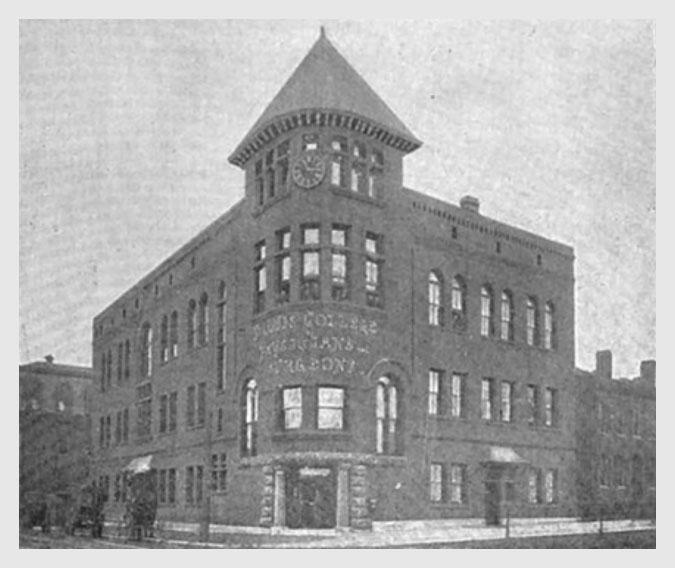
Figure 3. The St. Louis College of Physicians and Surgeons opened in 1879. Kinyoun took a course there in 1880–1881, apparently with noted microscopist Frank L. James (1841–1907), and enrolled in New York City’s Bellevue Hospital Medical College later that year.
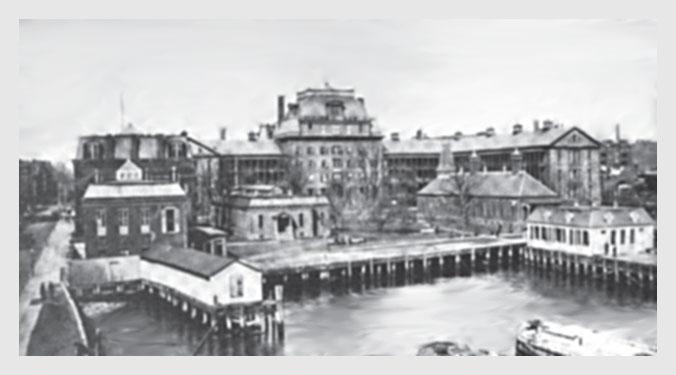
Figure 4. Bellevue Hospital, New York, in 1879, two years before Kinyoun enrolled.
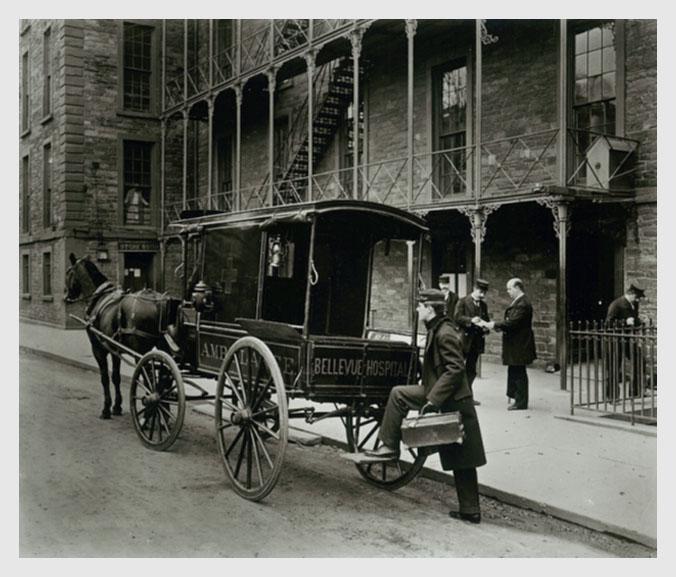
Figure 5. Bellevue Hospital and Bellevue Hospital Medical College, where Kinyoun received his M.D. degree in 1882; the Medical College was among the nation’s best medical schools, offering research experiences as well as instruction by nationally and internationally renowned professors. Before the landmark 1910 “Flexner Report,” U.S. medical education was of mixed and often poor quality. Some medical schools offered only brief courses that lacked clinical and pathological training, and some of these were held in such locales as drug stores. The Flexner Report, which recommended strengthening U.S. medical education, was led by Abraham Flexner (1866–1959), younger brother of Kinyoun’s friend Simon Flexner, whose unrelated “Flexner Commission Report” in 1901 on the existence of plague in California exonerated Kinyoun of charges by California Governor Henry Gage (see Figure 6).
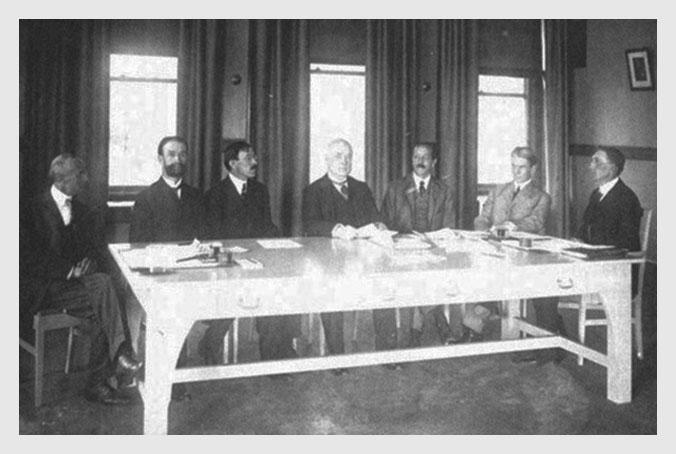
Figure 6. Some of the key figures in Kinyoun’s professional life, assembled for a Rockefeller Institute meeting. Throughout his career, Kinyoun interacted substantially with most of these men. Pictured at a meeting of the Board of Directors of the Rockefeller Institute for Medical Research are, from left to right: Simon Flexner (1863–1946), Theobald Smith (1859–1934), Hermann M. Biggs (1859–1923), William H. Welch (1850–1934), T. Mitchell Prudden (1849–1924), Luther Emmett Holt (1855–1924), and Christian A. Herter (1865–1910).
Graduating in March 1882—John Shaw Billings (1838–1913) gave a hilarious commencement address that closed with the sober challenge: “the eyes of the world are upon you” (19)—Kinyoun practiced medicine for a few months in New York City while taking postgraduate courses in analytical chemistry, toxicology, surgery (under Frederick Augustus Castle [1842–1902]), and gynecology (under Joseph Decatur Bryant [1845–1914]) (20). Back in Missouri by December 1882, the loss of his first patient—a little girl who died of (probable) diphtheria, among the deadliest of childhood diseases—so depressed him that he considered quitting medicine altogether, writing his mother, “[I] am literally worn out” (18). Instead of quitting, he taught with his father in the Centre View Academy school while helping him in his “active country practice.” He made medical visits for mostly minor complaints, seeing children and pregnant women ($1 a visit and $10 a delivery), taking on some of his father’s debtors as patients (21), and marrying a local beauty, Susan Elizabeth (“Lizzie”) Perry (1860–1948), the granddaughter of prominent Missouri pioneers. Their first child, Bettie, was born a year later, and they subsequently had four more children.
During this period, Kinyoun somehow obtained a microscope, which at the time was an expensive gadget usually purchased by well-off hobbyists examining such natural sources as pond water. In between patients and classes, he used it to make studies concerning such agricultural diseases as anthrax, chicken cholera and “swine plague” (both caused by Pasteurella multocida), and later human erysipelas and osteomyelitis (20), apparently making him the only autodidact of the tiny group of American founders of bacteriology. By 1885, Kinyoun was ready to move on. Where three years earlier there had been few if any bacteriology laboratories in the United States and no bacteriology positions, the situation was now changing. Philanthropist Andrew Carnegie (1835–1919) had just funded a Bellevue laboratory for pathologic and bacteriologic research, to be run by Kinyoun’s old professors Frederick (“Fred”) Shepard Dennis (1850–1934) and Edward G. Janeway (1841–1911). Although apparently still lacking practical bacteriologic experience, the 26-year-old Hermann M. Biggs, Kinyoun’s medical school friend, was the new bacteriology instructor.
Kinyoun and Biggs were on the cusp of a revolutionary new era of microbiology; William Thompson Sedgwick (1855–1921) later recalled that: “The word ‘bacteriology’ had appeared before 1886 but the subject had no existence anywhere much before that time . . . .” (22) Charles-Edward Amory Winslow (1877-1957) called the 1880s “the most wonderful decade in the history of medicine” (23). Microbiology’s arrival caused a revolution, and Kinyoun found himself in the right place at the right time. He returned to New York as the Carnegie Laboratory’s first bacteriology student, specifically to study cholera (20), the cause of which had (arguably) just been discovered by Koch (24), but which was not then prevalent in the United States.

